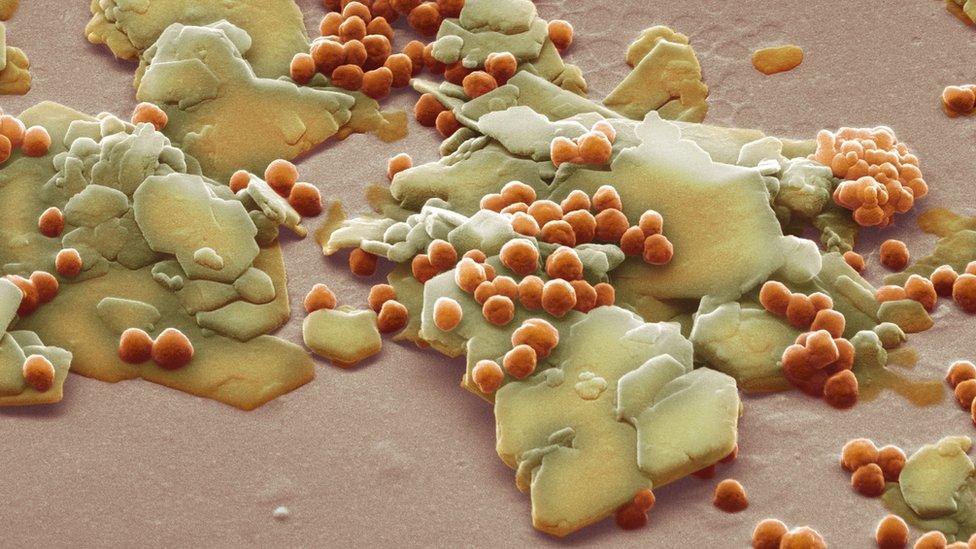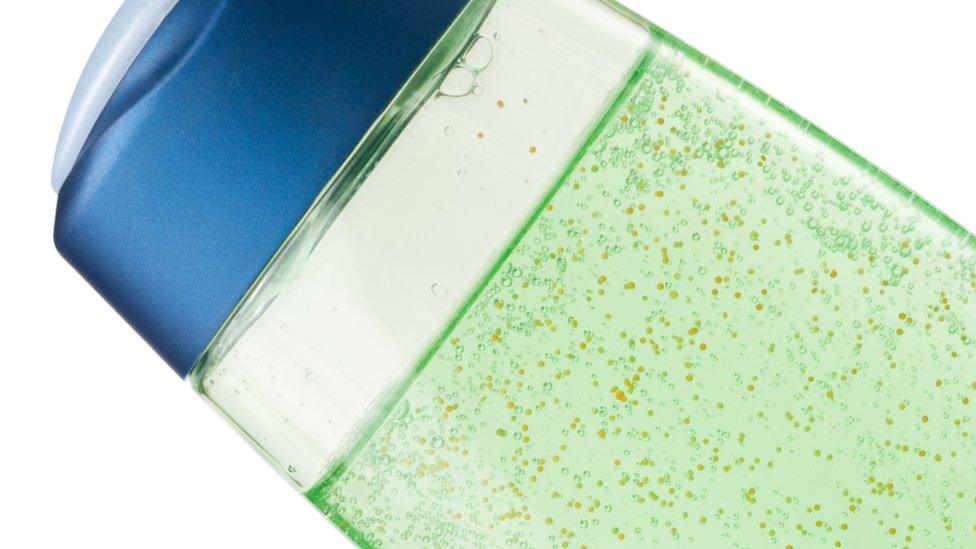MPs call for ban on plastic microbeads
- Published

Microbeads are used in cosmetics, including toothpaste, to add body and provide abrasion
A worldwide ban on plastic microbeads in cosmetics should be imposed as soon as possible, MPs have demanded.
The Environmental Audit Committee says the tiny balls of plastic used in shower gels and facial scrubs can even be found in Arctic sea-ice and on the ocean floor.
The MPs say synthetic fibres from worn car tyres and fleece jackets may also be harming wildlife.
The government says it will consider a ban on microbeads in cosmetics if the EU doesn’t legislate against them.
But the MPs want ministers to take a firmer position on this growing problem.
The committee chair, Mary Creagh, said: “Trillions of tiny pieces of plastic are accumulating in the world’s oceans, lakes and estuaries, harming marine life and entering the food chain. A single shower can result in 100,000 plastic particles entering the ocean.
“Cosmetic companies’ voluntary approach to phasing out plastic microbeads simply won’t wash. We need a full legal ban.”
Why are microbeads controversial?
Microbeads are plastic particles smaller than 5mm. They are used in cosmetics, including toothpaste, to add body and provide abrasion. Manufacturers use them because the beads can be manufactured to uniform degrees of size and hardness.
Other microplastics result from the breakup of larger plastic objects in the oceans – like bags, bottles and discarded fishing gear. It is estimated that between 15-51 trillion microplastic particles have accumulated in the ocean.
Microplastics from cosmetics are thought to constitute just 0.01% to 4.1% of plastics entering the marine environment.
But the committee says that although microbeads are a small part of a huge problem, a ban would show commitment to tackling the wider issue.
Easy to eat
Microplastic pollution is potentially more environmentally damaging than larger plastic waste, because it is more likely to be eaten by wildlife. Microplastics also have a greater surface area to attract toxins.
Professor Tamara Galloway from Exeter University said: “We find pieces of plastic in every sample of seawater we study from round the world. Many marine animals ingest microbeads, mistaking them for food. They can then be lodged in the animals’ gut – preventing them from eating nutritious food.
“An average plate of oysters could contain up to 50 plastic particles. We don’t have any evidence yet for the harm this might cause but most people would probably prefer not to be eating microbeads with their food.”

There is evidence microplastics are being ingested by zooplankton like this copepod
The tiny synthetic fibres used to make fleece jackets are also contaminating fish, the MPs have warned. One estimate suggests around 1,900 individual fibres can be rinsed off a single synthetic garment - with perhaps 40% of them evading sewage treatment works and ending up in the ocean.
This is ironic as fleece jackets are made of discarded plastic bottles, and have been considered a solution to waste plastic.
The biggest single source of microplastics is estimated to be abrasion from car tyres and road markings. But this issue is likely to prove much more difficult to address than a relatively straightforward ban on microbeads in shampoo, where substitutes are readily available.
Over 280 marine species have been found to ingest microplastics, but the MPs say much more research is needed into plastic pollution because there is huge uncertainty about the ecological risk.
"We are absolutely committed to protecting the world's seas, oceans and marine life from pollution, and will take a detailed look at the recommendations contained in this timely report," a spokesperson for the Department of Environment, Food and Rural Affairs (Defra) said.
"Many leading manufacturers have already taken voluntary steps to remove microbeads from cosmetics, beauty products and toothpastes. We will now consider what further action is appropriate, and make any announcements in due course."
Follow Roger on Twitter., external
- Published24 August 2016

- Published24 August 2016